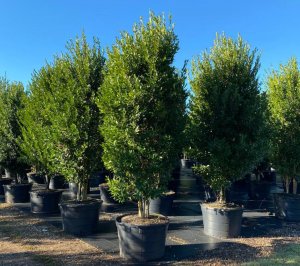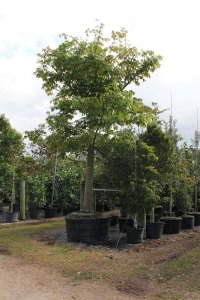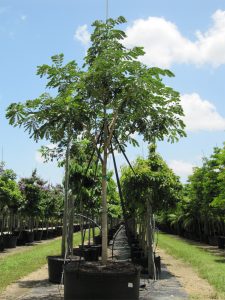Shade plants can be thought of as either providing shade or requiring some degree of shade for normal growth. As, shade describes the comparative darkness at a particular location through blockage of the sun’s rays. And in the classification of sun and shade trees and plants according to their optimal light requirements; those needing full sunlight for good growth are known as heliophytes (sun-loving). While those growing best in shade are known as sciophytes (shade-loving).
Heliophytes and Sciophytes Differences (Sun and Shade Trees )
However, some plants are more adaptable than others; there are heliophytes that will grow in partial shade and sciophytes which behave in bright light. So, what is the difference between heliophytes and sciophytes?
Heliophytes are capable of a more efficient use of high light intensities than sciophytes plants. Besides, heliophytes can never reach photosynthetic saturation under natural conditions. While, sciophytes often reach a saturation level at light intensities of only 20% of full sunlight. But Heliophytes that grown under shade do exhibit a lower growth and reproduction rate. While sciophytes in the direct sun can experience leaf burn and wilting.
In an environment with outstanding shade, sciophytes develop large leaves with large surfaces; containing a high concentration of chlorophyll and accessory pigment. Photosynthesis in such plants make the best use of light available from sunflecks and reflection.
Heliophytes and Sciophytes in Tropical Rainforest
A tropical rainforest is an excellent natural example of how sun and shade plants coexist; and its vertical structure can to some degree replicates with garden plants.
Four distinctive layers are in a mature tropical rainforest. Topmost is an emergent discontinuous layer of heliophytic trees, up to 200 feet tall with umbrella-shaped crowns. Next is the canopy layer of continuous tree crowns, with trees 60-90 feet tall, predominantly heliophytes. The canopy also contains numerous ground-root vines and is rich in animal life, especially birds.
Flowing, there is the understory layer, with heavy shade, receiving 15 percent or less of the sunlight able to filter through the canopy. Tree growth is not continuous and is basically build upon tree species waiting to take their place in the canopy or emergent layers; as older trees die and fall, creating a gap in the canopy. These understory trees undergo a growth spurt when more light becomes available. Orchids, bromeliads and other schiophytes are common to this layer. The understory is hot and damp, and rich in animal life, particularly insects.
Finally, the forest floor layer is almost complete shade. Small seedlings and saplings and other plants are sparse around so that it is possible to walk about. A considerable amount of litter is present but it decays quickly under the hot, humid conditions; ground animals, ants and other lifeforms are present. One of many fascinating adaptations of plants in the tropical rain forest is that on the forest floor; where canopy vine seeds are dropped, they germinate and become sciotrophic. Growing toward the darkest object, which is the trunk of a tree. When they start to climb the tree they change and become heliotrophic; growing upward toward the light in the canopy.
Heliophytes and Sciophytes Plants at TreeWorld
The creative gardener can create a pleasing combination of heliophytes and sciophytes plants, including trees, shrubs and herbaceous plants; by taking into account natures structure of the tropical rainforests. At TreeWorld inventory you can find trees and shrubs with labels regarding light requirements, making species selection easy.
Contact us for further information!
Enjoyed this article? Explore more! Read our article on mixed hedge ideas!






